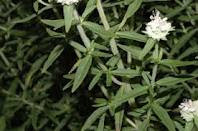THE MIRACLE FRUIT OR BERRY, SYNSEPALUM DULCIFERUM
The miracle berry is so-called because it has the ability to change the sour taste of food (such as limes or lemons) to a sweet one. If you eat a berry before having a sour fruit or other food, your taste buds are fooled into thinking that you are eating something sweet. This phenomenon is caused by a glycoprotein, miraculin.
 There were attempts in the USA to have the berry classified as a sweetener, but these were unsuccessful. Stevia, another plant sweetener is classed as a dietary supplement. However it is used in the food industry as a sweetener.hhhhhhj
There were attempts in the USA to have the berry classified as a sweetener, but these were unsuccessful. Stevia, another plant sweetener is classed as a dietary supplement. However it is used in the food industry as a sweetener.hhhhhhj The berries grow on a shrub that is indigenous to West Africa, and have been used to sweeten palm wine there traditionally. They don’t actually have a high sugar content, although they do taste slightly sweet, if bland. The bushes they grow on can reach heights of around twenty feet in West Africa, although in cultivation rarely grow above ten feet.
 The berries are popular among cancer patients undergoing chemotherapy as they say it takes away the metallic taste in their mouths which is one of the side effects of chemotherapy. They are also being researched as they may help diabetics. “Improvement of insulin resistance by miracle fruit (Synsepalum dulciferum) in fructose-rich chow-fed rats” Chen C.C. et al. Journal of Phytotherapy Research 2006, November, Vol. 20 (11) pp. 987-992 which states: -
The berries are popular among cancer patients undergoing chemotherapy as they say it takes away the metallic taste in their mouths which is one of the side effects of chemotherapy. They are also being researched as they may help diabetics. “Improvement of insulin resistance by miracle fruit (Synsepalum dulciferum) in fructose-rich chow-fed rats” Chen C.C. et al. Journal of Phytotherapy Research 2006, November, Vol. 20 (11) pp. 987-992 which states: -“the results suggest that miracle fruit may be used as an adjuvant for treating diabetic patients with insulin resistance because this fruit has the ability to improve insulin sensitivity.”
The fruit cannot be easily transported however as it lasts only for two or three days. The pulp can be freeze-dried, which is good news for some. Heat destroys the miraculin so it cannot yet be preserved in any other way. In Japan it is popular among dieters.
This miracle berry and its bush belong to the Sapotaceae family, which makes it a relative of sapodilla, butter nut trees with mahua flowers, and the African Shea tree from which we get shea butter.















